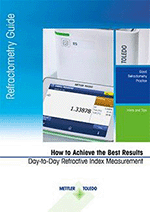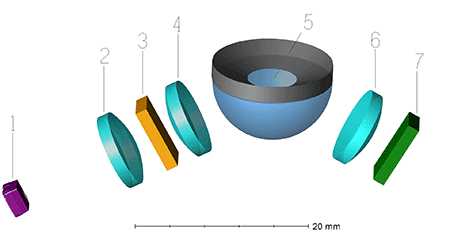U mjerenju indeksa loma valna duljina svjetlosnog snopa važna je zbog učinka disperzije na svojstva valova u mediju (poznatom kao disperzijski odnos). Gotovo sve tvari imaju različite indekse loma koji se također razlikuju ovisno o korištenoj valnoj duljini. Ovaj odnos disperzije može se izračunati na sljedeći način.
Znamo da je brzina svjetlosti u mediju:
v = c/n
Gdje:
n je indeks loma
c je brzina svjetlosti u vakuumu (ili zraku)
v je brzina svjetlosti u medijima
Slično tome, valna duljina u istom mediju je:
λ = λ0/n
gdje je λ0 valna duljina tog svjetla u vakuumu (ili zraku).
Stoga je indeks loma (n) obrnuto proporcionalan valnoj duljini, kao i brzini svjetlosti. To znači da što je veća valna duljina, to je niži indeks loma. Taj je odnos predstavljen jednadžbom:
v(λ) = c/n(λ)
Međutim, za industrijske primjene u kojima je potrebno mjerenje indeksa loma potrebno je imati definiranu, preciznu valnu duljinu kako bi se omogućilo mjerenje indeksa loma različitih uzoraka pod istim uvjetima za kontrolu kvalitete.
Da bi se stvorila definirana valna duljina, refraktometri najčešće koriste natrijevu D-liniju, koja odgovara 589,3 nm. Zbog činjenice da je široko dostupan, pouzdan i stabilan izvor svjetlosti, natrijeva D-linija se odavno koristi u proučavanju indeksa loma.



















